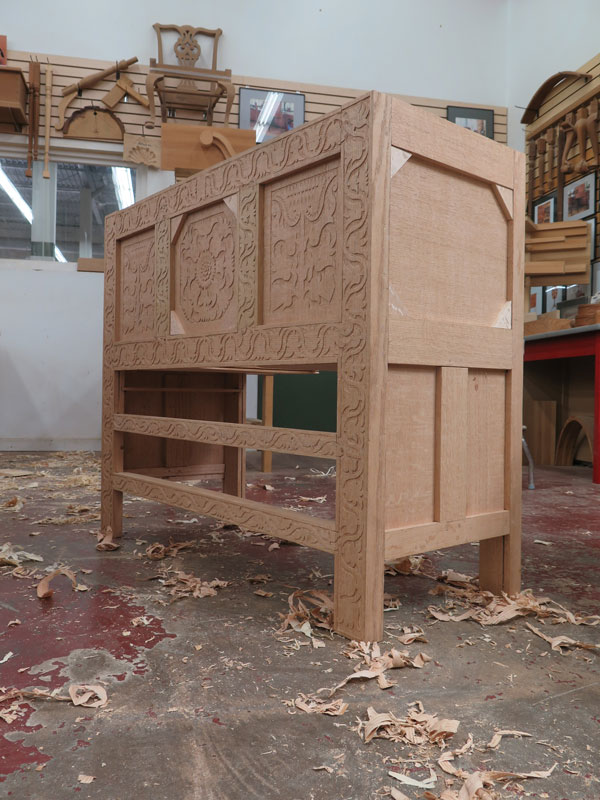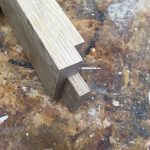We may receive a commission when you use our affiliate links. However, this does not impact our recommendations.
It’s difficult to argue against perfection in woodworking. That’s because the counter argument is something like: “You’re a hack and can’t get it right, and so you say that your imperfections are intentional.”
Or put another way, you can’t be too rich, too thin or have joinery that is too perfect.
Here’s how I think about perfection: We now have the technology to abolish time zones. Each person’s phone could be set to a perfect local time where noon is always perfect noon when the sun is right overhead. And midnight is perfect midnight.
This sort of accuracy is, however, incredibly stupid. The people in the neighborhood west of you could be five minutes earlier than you. And the neighborhood east of you would be a few minutes later. How would anyone meet for lunch? Or arrive on time at work? So while we can have perfect accuracy in this instance, it’s not a good idea.
The same goes for furniture. When people see Peter Follansbee’s carved chests, they usually fall in love with the form, even if they don’t like early American carved oak furniture. While there are lots of things to love about Follansbee’s work, I think its main allure is all the little imperfections in the work that show it was made by hand. These imperfections aren’t introduced intentionally, they are simply a by-product of the layout, joinery and carving methods that Follansbee uses.
If you think I’m wrong, check out a machine-made version of one of these chests. Lots of people have made them, but probably the most notable example is the one featured on this 2010 magazine cover. It’s flawless work. Great wood selection. The carvings are crisp. But it simply doesn’t have the same life as one of Peter’s chests because it’s just too perfect.
The work of Jögge Sundqvist is another great example. Can you imagine one of his distaffs made on a CNC lathe? Or one of David Fisher’s bowls?
On the other hand, try to picture one of James Krenov’s cabinets made in the Adirondack style with bits of bark all over it. Or in wild fiddleback maple. Or sanded to #320-grit with a DA sander.
For me, perfection has nothing to do with shimmering surfaces and piston-fit drawers. It’s a trickier thing where you bring all aspects of a piece into harmony – the form, the wood, the joinery, the surface decoration and the finish. Fail at one of those and your work looks odd, lifeless or just ugly. Succeed at all of them (which is really difficult to do), and you’ll create a piece you can’t take your eyes off of for years to come.
— Christopher Schwarz
Here are some supplies and tools we find essential in our everyday work around the shop. We may receive a commission from sales referred by our links; however, we have carefully selected these products for their usefulness and quality.










We have a very narrow view of perfection. Another meaning of perfect is ‘complete’ or ‘finished’. Nothing to do with machining accuracy, or precise dimensions. It’s about whether you feel satisfied with the object. That it meets your needs and not the needs of a ‘group think’ that ultimately becomes intolerant of anything. A personal dialogue between you, the object and the creator of the object. A communication.
Precision is absolute, accuracy is variable. A vernier is a precision tool used to measure accurately.
The problem with this Connecticut/Sunflower Chist (chest) is not that it’s perfect, it just doesn’t look right without the split spindles and turtles. I can only assume they’ll use pulls from Home Depot for the drawers? What do you think Wallace would have to say?
Yes, Chris, I couldn’t agree more. Perfection is a fetish that militates against the real goal of a woodworker, which I would call excellence. Knowing excellence understands the range of tolerances, and that which truly creates fine function and style.
Poor musicians are tense, and the rigidness shows in their performance. Masterful musicians demonstrate an ease with the music, and thus can add their own stylistic variations.
FWIW, I have more thoughts on the perfection “problem” here:
http://www.rpwoodwork.com/blog/2017/04/21/beyond-perfection/
Rob
A wise man once said, “Measuring is the enemy of accuracy”.
“Or put another way, you can’t be too rich, too thin or have joinery that is too perfect.”
That’s not entirely accurate.
You can be to thin. It’s called anorexia,
and many have died from it.
Good article though!
The Mayans believed that perfection was for the Gods and introduced imperfections to avoid angering the Gods. I agree, although I don’t seem to have to introduce imperfections, they come all by themselves.
I have completed a lot of odd work!
I suppose this is the artistic versus (machine) perfection argument. Mechanically we want our furniture and tools to work perfectly, but we want them to look like art. Nature is beautiful in its flow and blended irregularity. Thus we praise highly figured wood and the marks of the carver, but want our drawers and joinery to fit perfectly.
We all walk to the beat of a different drum.
It’s the imperfections that make a thing a work of the hand. Ditto your sentiment. In examining an old piece, I look for those telltale signs of the craftsman. They’re our connection to the humanity of the past.
Fantastic post, very enjoyable.
Love this post!! I can’t tell you how many customers over the last 25 years that love the minor imperfections in each piece. To them it shows that each piece is truly handmade and since no one is perfect, you end up with a few imperfections in every piece.
**** PERFECT ****
My son once asked why I left visible facets on my woodcarvings, why I didn’t sand them smooth. You and your readers don’t need the answer.
Thanks also for the links to other “imperfect” beauty.